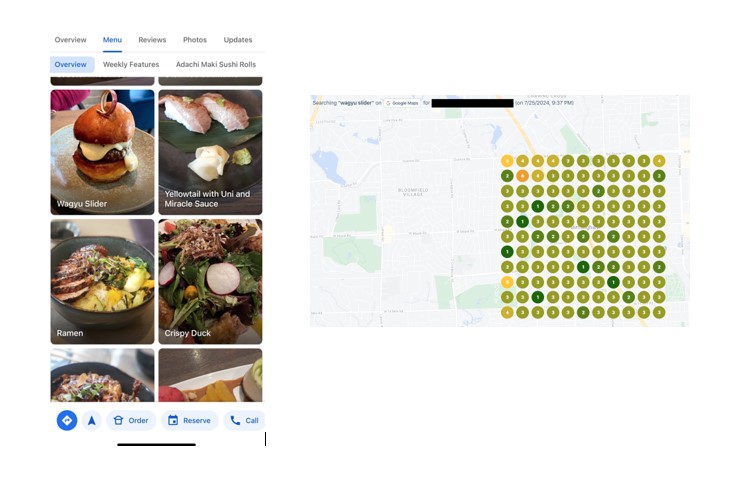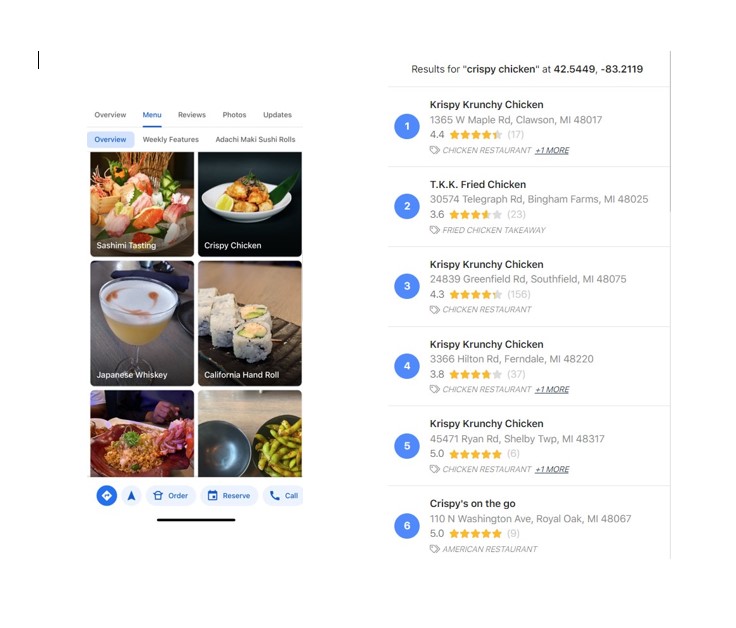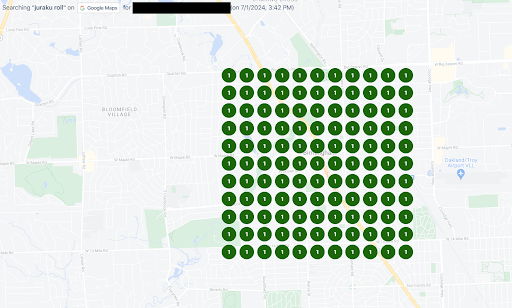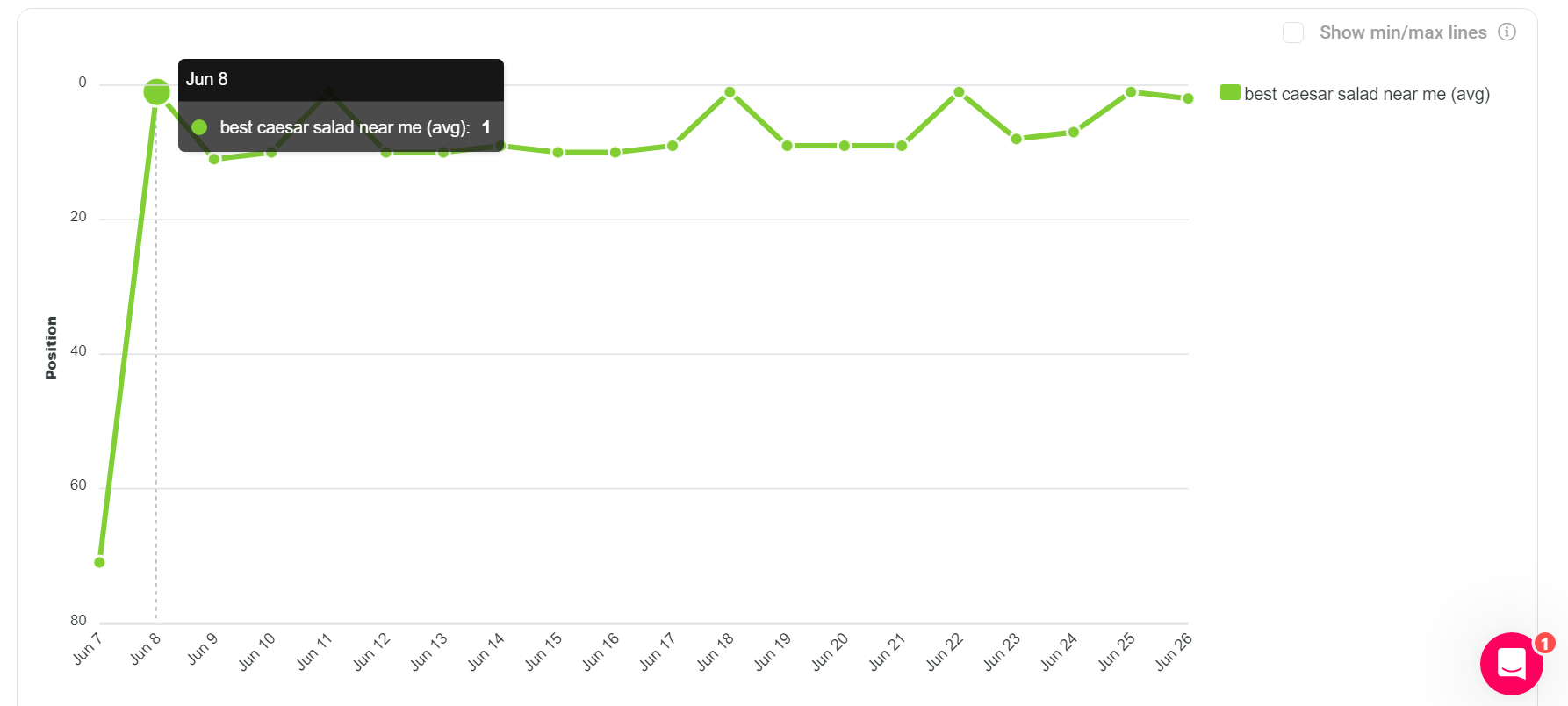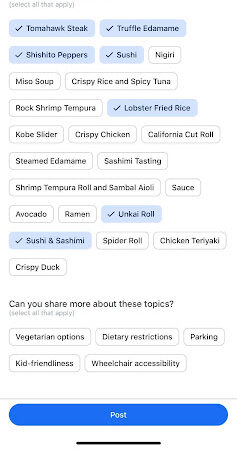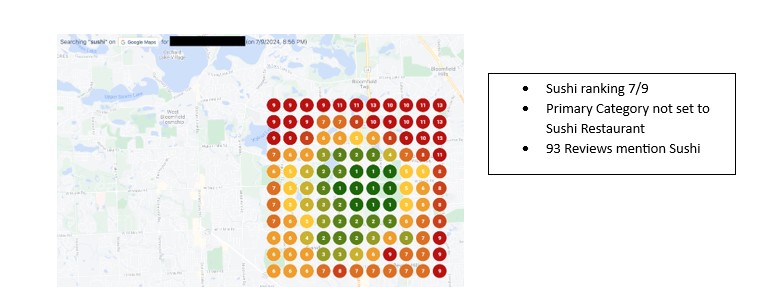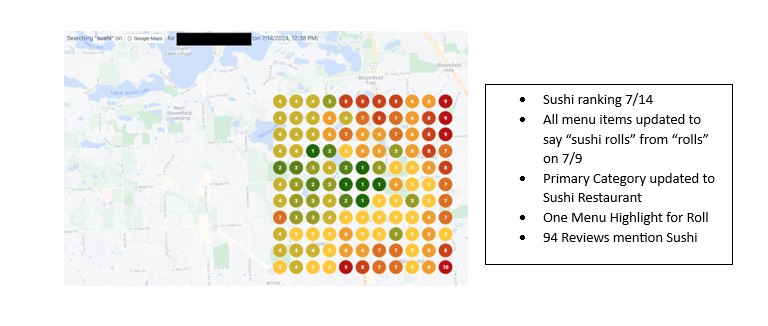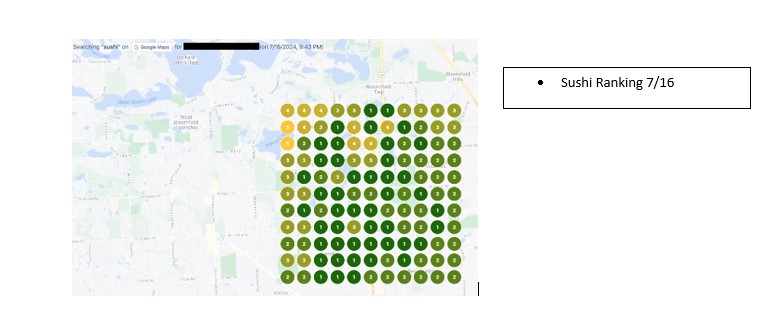In today’s fiercely competitive landscape, where every local business is striving for visibility, optimizing your Google Business Profile (GBP) has never been more critical. Among the many facets of GBP that often fly under the radar, one stands out for its potential to significantly boost your visibility: naming your menu items.
Strategically naming your menu items can elevate your search rankings, making it easier for potential customers to discover your culinary delights. This isn’t just about listing what you serve; it’s about meticulously crafting each menu entry with search optimization in mind.
In this post, I’ll dive into some fascinating findings on ranking signals and share actionable insights that can help any local restaurant make meaningful improvements. While the focus will be on menu items, the principles discussed can be applied across other categories, enhancing your overall search visibility through deliberate and strategic optimizations.
In the above example, it was straightforward to help this business rank for “sushi.” They had all the signals needed to rank: several sushi rolls on the menu, numerous images of sushi in reviews, menu highlight for a sushi roll and “sushi” in the business name. The main contributing factor for their improved ranking was updating the primary category. Changing it to “Sushi Restaurant” made a significant difference.
6. Understand Your Competitors
The sushi restaurant also has a menu item for Kobe Sliders. I wanted to see how they would rank for “sliders.” Here’s what I found: they have four menu items that mention sliders, 20 reviews that mention sliders, and 11 photos of sliders. The menu highlight had an image of the slider but was labeled “Tapas.” I tried several times to update the name from “Tapas” to “Slider,” but it was rejected.
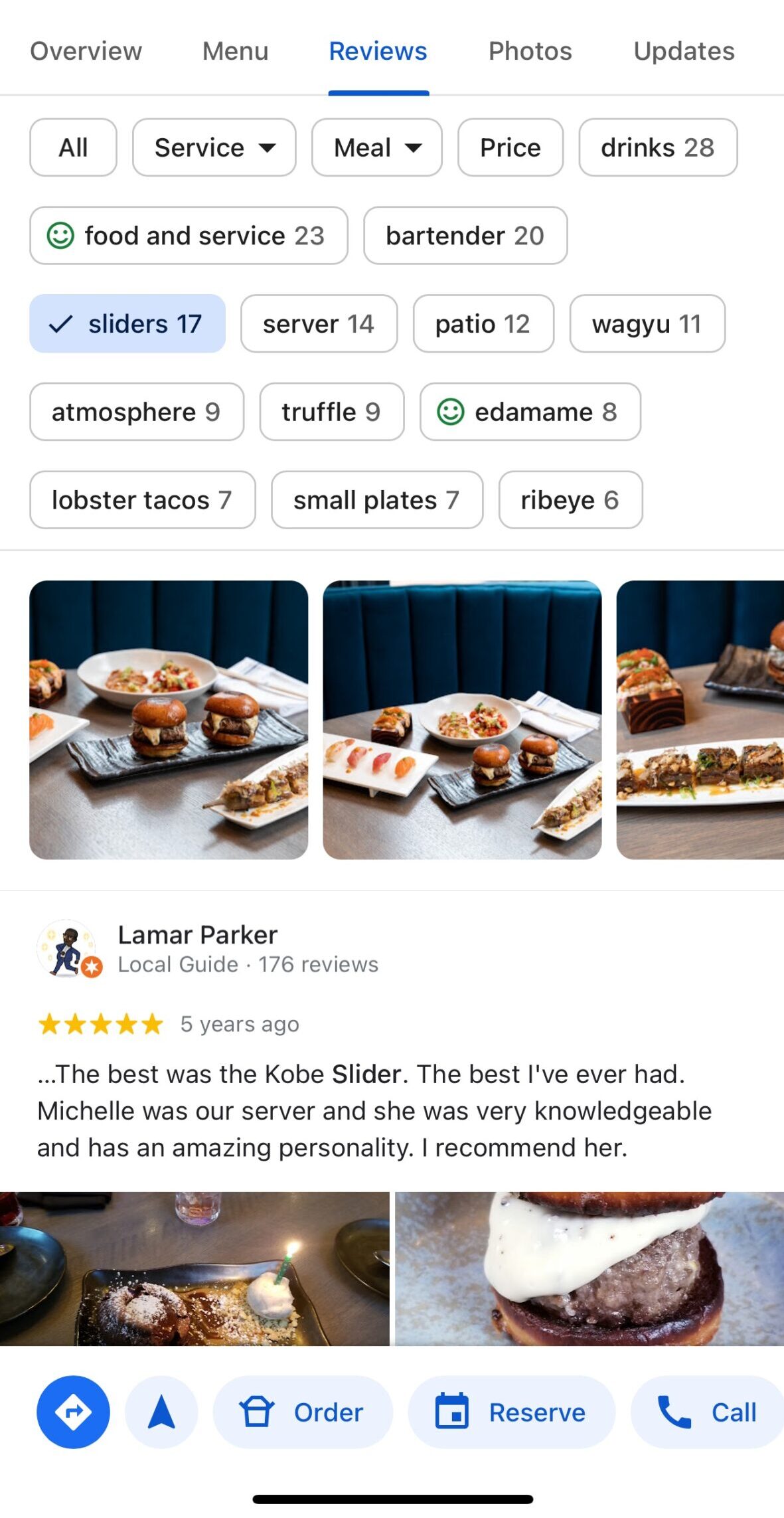
Although they rank for “Kobe slider,” they did not rank for “slider.” Despite having most signals in place to rank for the keyword “slider,” achieving this seems unlikely. The top 20 restaurants that rank for “slider” had “slider” or “hamburger” in their name, and their primary categories were more relevant, such as “Hamburger Restaurant,” “Fast Food Restaurant,” or “American Restaurant.” Many of these restaurants had slider menu items, multiple menu highlights labeled “sliders,” and numerous images of sliders or burgers.
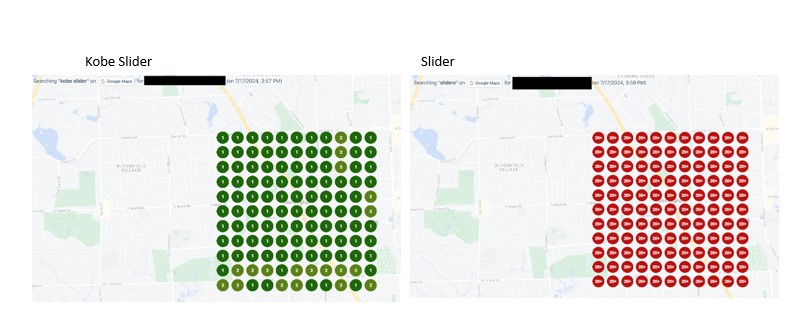
After a few days the menu highlight changed from “tapas” to “wagyu slider.” I requested the name change to just “slider”. Edits to menu highlights can be done in the “NMX” or by suggesting an edit on Google Maps.
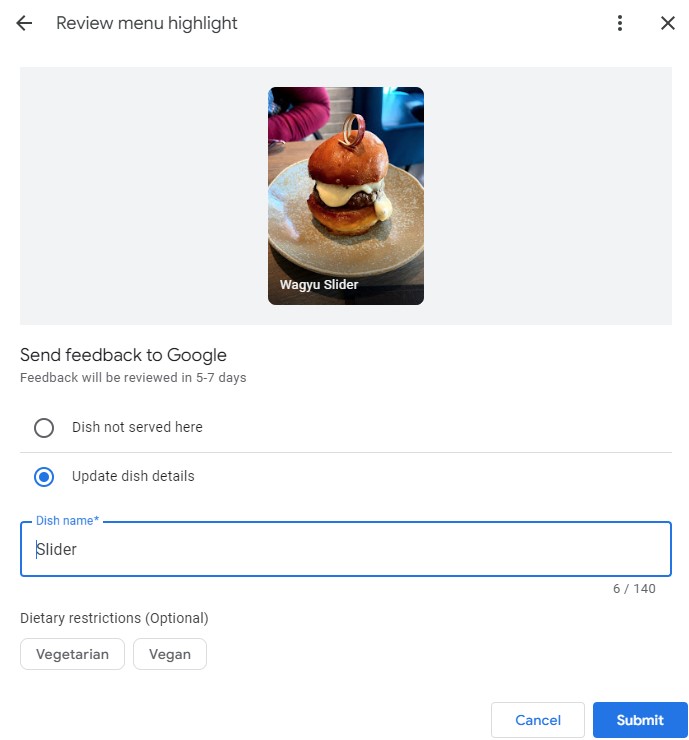
None of the menu items include the term “Wagyu,” nor do any of the reviews mention “Wagyu” before “slider.” However, Google’s moderators or AI tools labeled the menu highlights as “Wagyu Slider.” Intrigued by this, I ran a keyword scan for “Wagyu Slider,” and it ranked! It’s worth noting that menu highlights take 5-7 days to review according to Google.
